2-color tree frog
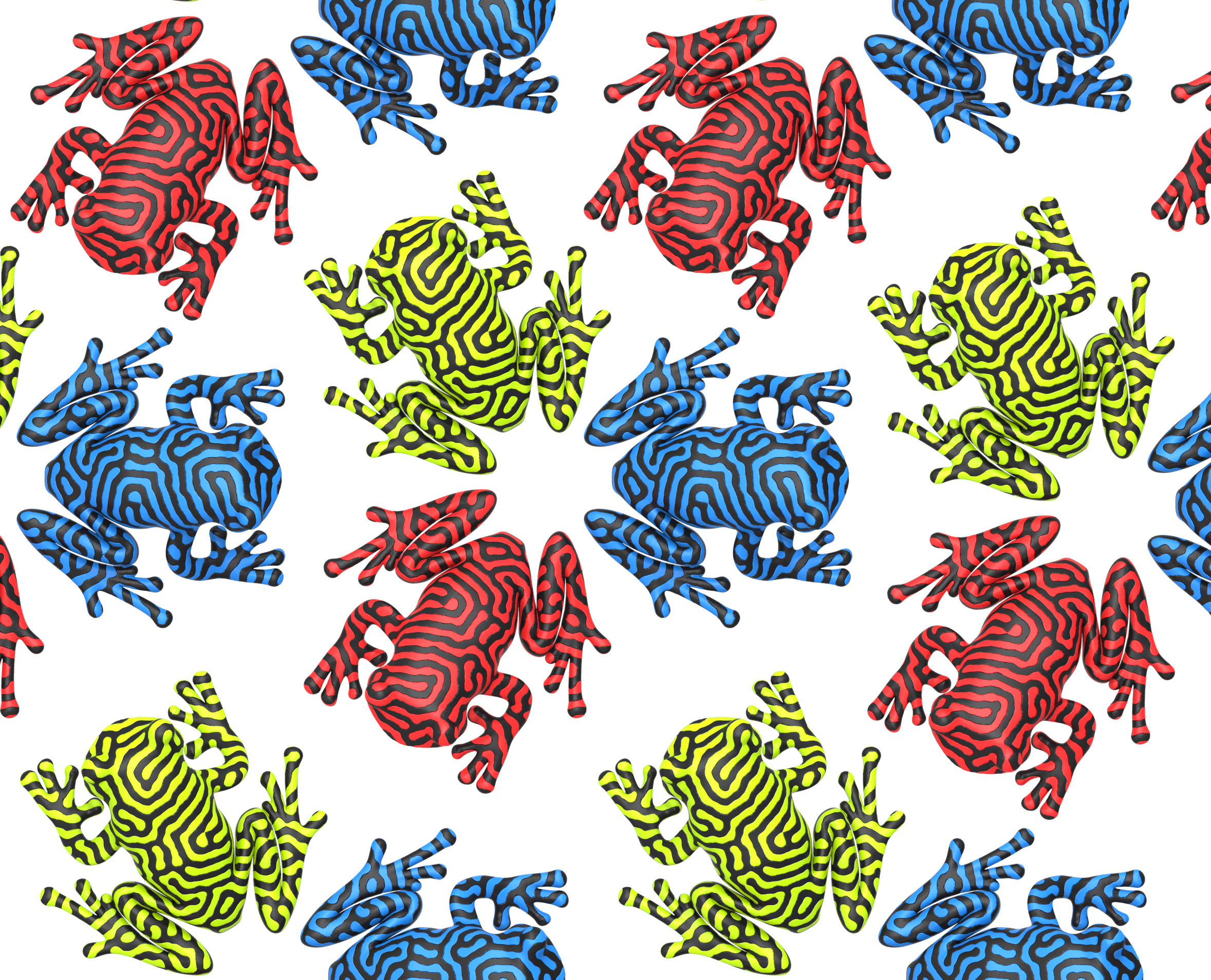
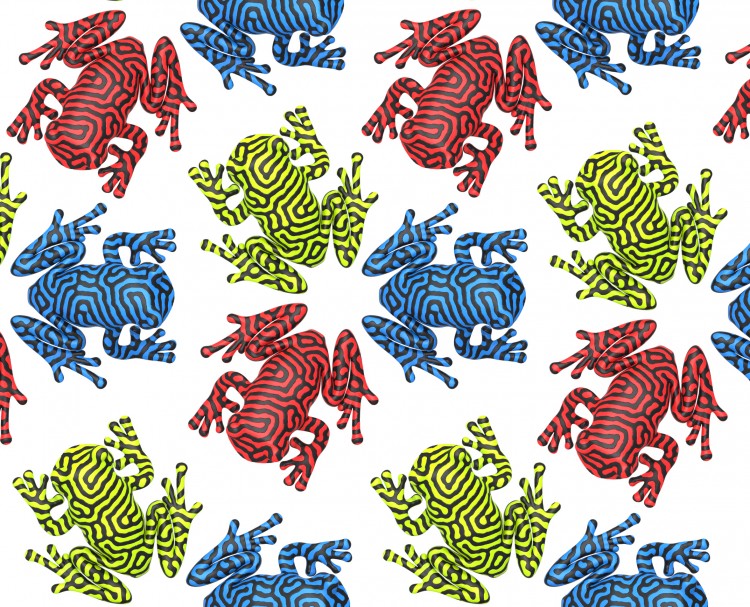
We’ve created a new 2-color animal and it is available for download at Thingiverse – a tree frog! This is the fourth striped animal we’ve created for home 3D printers equipped with multiple extruders. But it’s the first one where we 3D-modeled both the body shape and the pattern. Our tree frog is based on a recently discovered species called the Tiger’s Treefrog (Hyloscirtus tigrinus) which has an incredible maze-like pattern on its skin. Hyloscirtus tigrinus lives in the rainforests of Ecuador and Columbia and is exceedingly rare. Scientists estimate there are only 250 adult tiger’s tree frogs alive today.

files
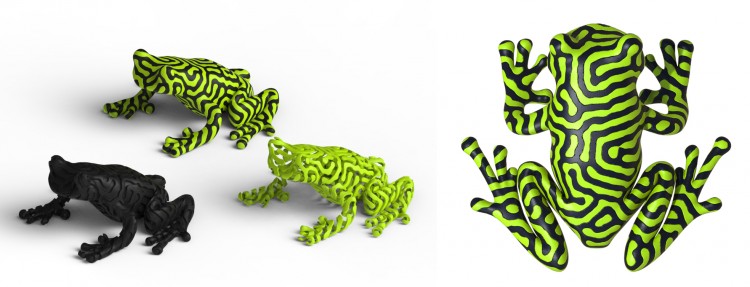 I’ve uploaded two different frogs, one for printing big and one for printing small. The frogs are designed for dual extrusion 3D printers and are each composed of two files: a “hollow” one and a “solid” one. If your printer only has a single extruder, you could print the “solid” half by itself to make a 1-color frog.
I’ve uploaded two different frogs, one for printing big and one for printing small. The frogs are designed for dual extrusion 3D printers and are each composed of two files: a “hollow” one and a “solid” one. If your printer only has a single extruder, you could print the “solid” half by itself to make a 1-color frog.
print settings
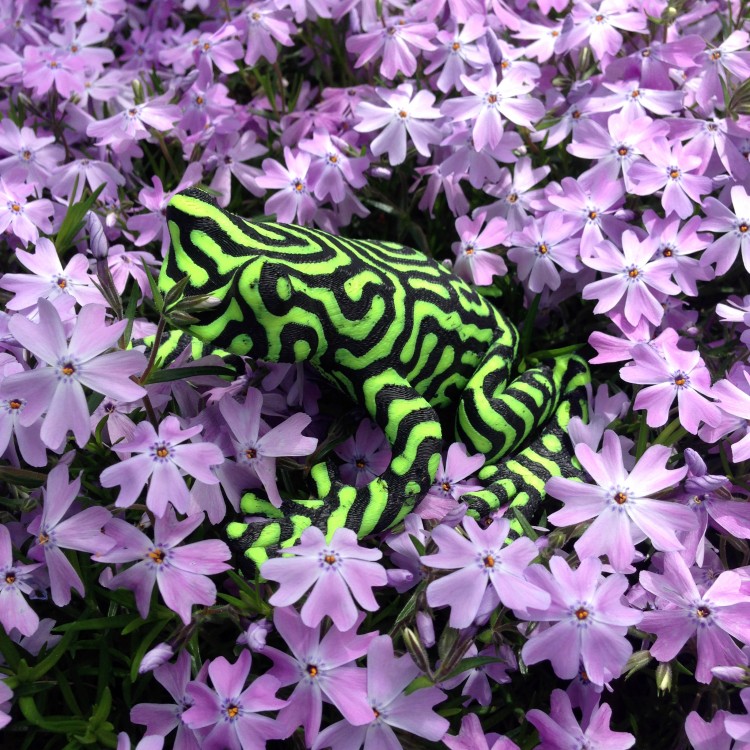
This is designed to be printed with no supports. We used Makerware’s medium settings to print the frog in ABS on our Makerbot Replicator 1 (2 shells, .2mm layer height and 10% infill).

design
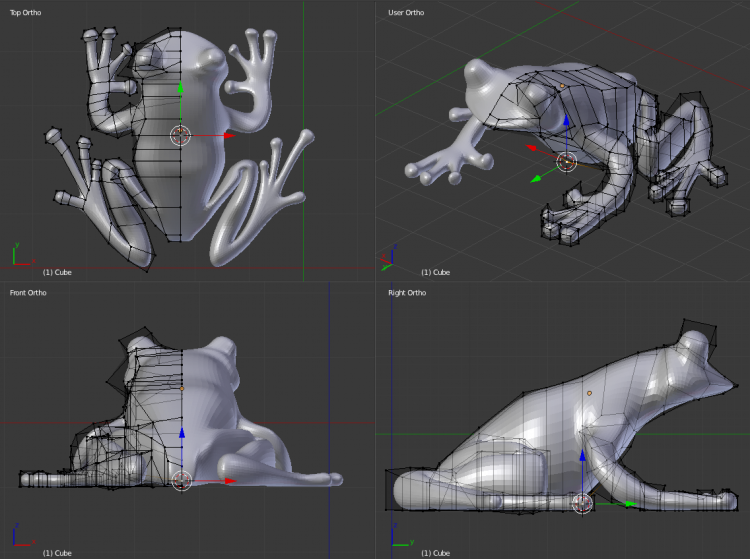
I modeled the body using subdivision surfaces in Blender from photographs of Hyloscirtus tigrinus. This is actually the first time I’ve ever done organic 3D modeling. I make lots of things that are organic 3D models but I normally don’t make them directly: I write software that generates the geometry automatically. It was an interesting experience to model something directly for once, and I was very impressed with how easy Blender is to use.
The stripe pattern was generated using our simulation of reaction-diffusion, a mathematical model that can be used to simulated the skin patterns of various animals. We are planning to release a browser-based tool for transforming any STL into a 2-color model for 3D printing in the near future using this method. You can read more about our work with reaction-diffusion in this blog post. And you can download our frog and other 2-color creations from Thingiverse by clicking the octopus below.

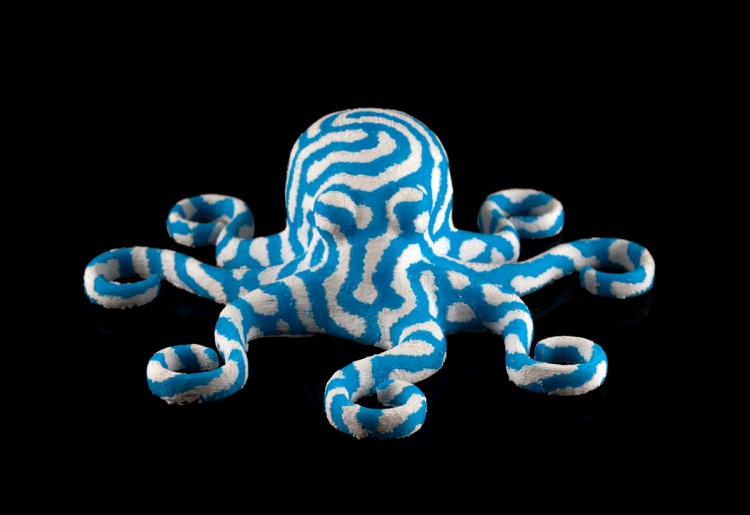
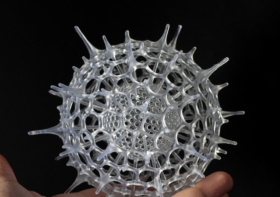
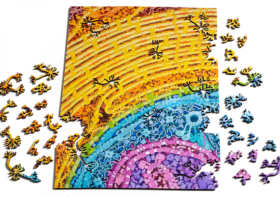
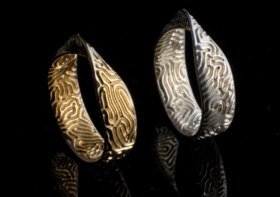
Brigitte
Hi!
Great work!! I try to do something similar with the Cell Facture Add-on in Blender and I have no idea how to separate the layers that I have different STL files.
Any advice?
Thanks so much!
Jessica
hi Brigitte, sorry I am not familiar with that add-on.
Peter Smith
Hello,
Can you offer some advice for printing striped objects? I need to print columns that alternate in material every 1mm. Most dual extrusion software requires that I create two separate stl designs, but splitting my columns into 1000s of 1mm pieces is unfeasible. Your design seems to be similar – any advice you can impart would be greatly appreciated.
Thanks!!
Jessica
Hi Peter,
Yes that’s the technique you will have to employ. Each material must be represented by a separate geometry file. We have our files on thingiverse if you want to take a look.